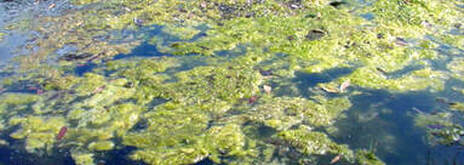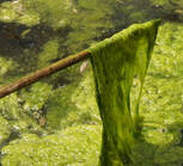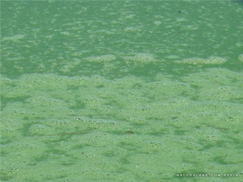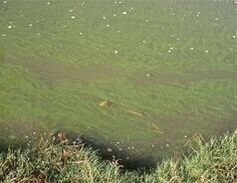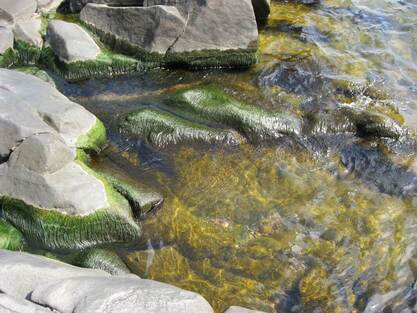Algae 101
Types of Algae
There are thousands of varieties of algae that can occur in a natural (non-chemically treated) body of water. Each species requires sunlight, nutrients, and, of course, water to bloom and thrive. Here are the three major types of algae that can occur in a natural pool or pond.
1. Filmaentous Algae or commonly called String Algae grows up from the bottom of the pool or attaches to pond/pool walls in long strings and can form a mat on the surface of the water. String algae is bright green to olive in appearance with a fine wool/hair-like texture. It needs sunlight in order to photosynthesize so is often seen in the brightest areas of your pool, and the shallow warm parts. This type of algae is not harmful to humans or animals while swimming.
2. Planktonic Algae or waterborne algae are suspended particles in the water, causing it to turn green, brown or orange/red. One type of planktonic algae is "blue/green" algae (or cyanobacteria) that can be toxic to humans and animals. It's presence usually indicates there are excess nutrients, like phosphorus, in the pond and a lack of aeration (water movement and oxygen). Do not swim in a pond that contains planktonic algae!
3. Periphyton or attached algae clings to stones and other surfaces underwater. It is typically green/brown in appearance and is seen most commonly in shallow water. This type of algae is non-toxic for humans & animals, and is typically safe to swim in.
There are many ways to prevent or control existing algae blooms. Water movement and circulation is your biggest ally, other methods include limiting sunlight with pond dye, adding beneficial bacteria, using a pH decreaser or installing a UV filter.

